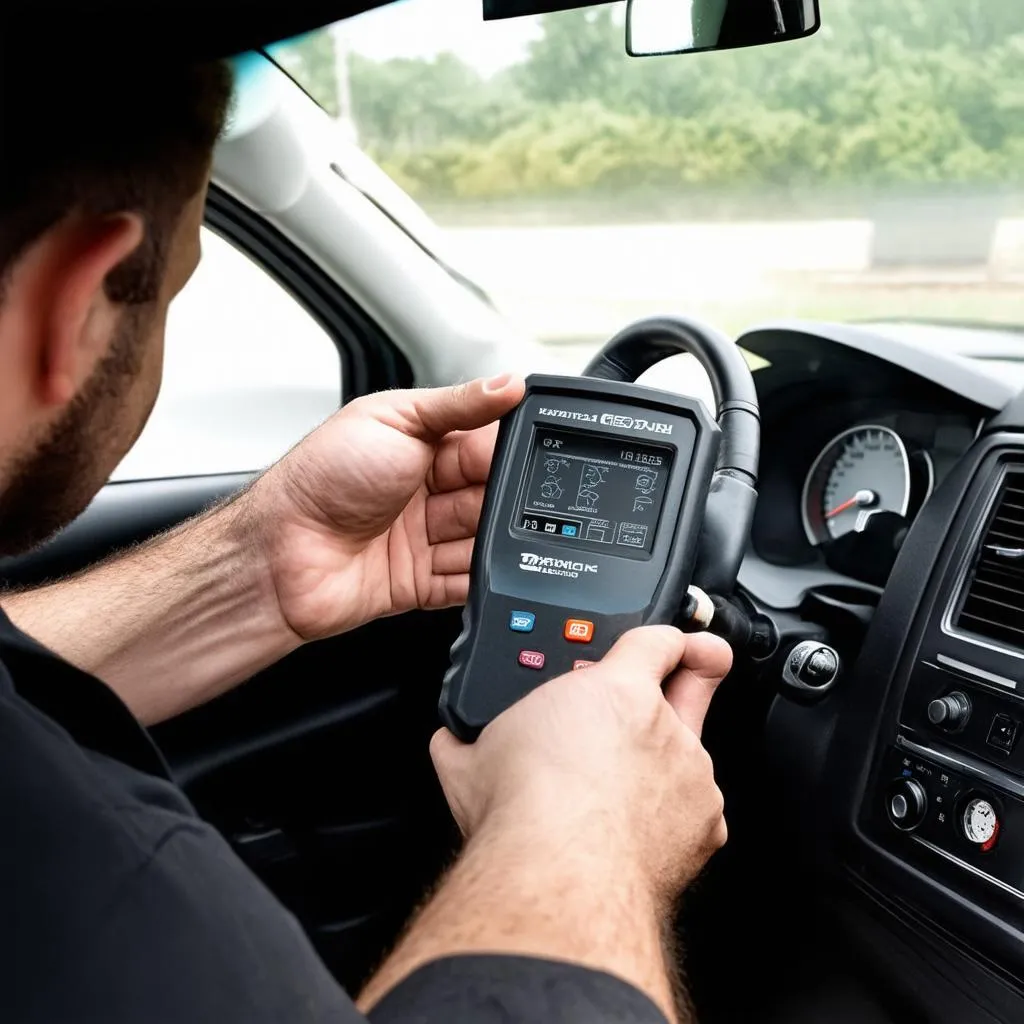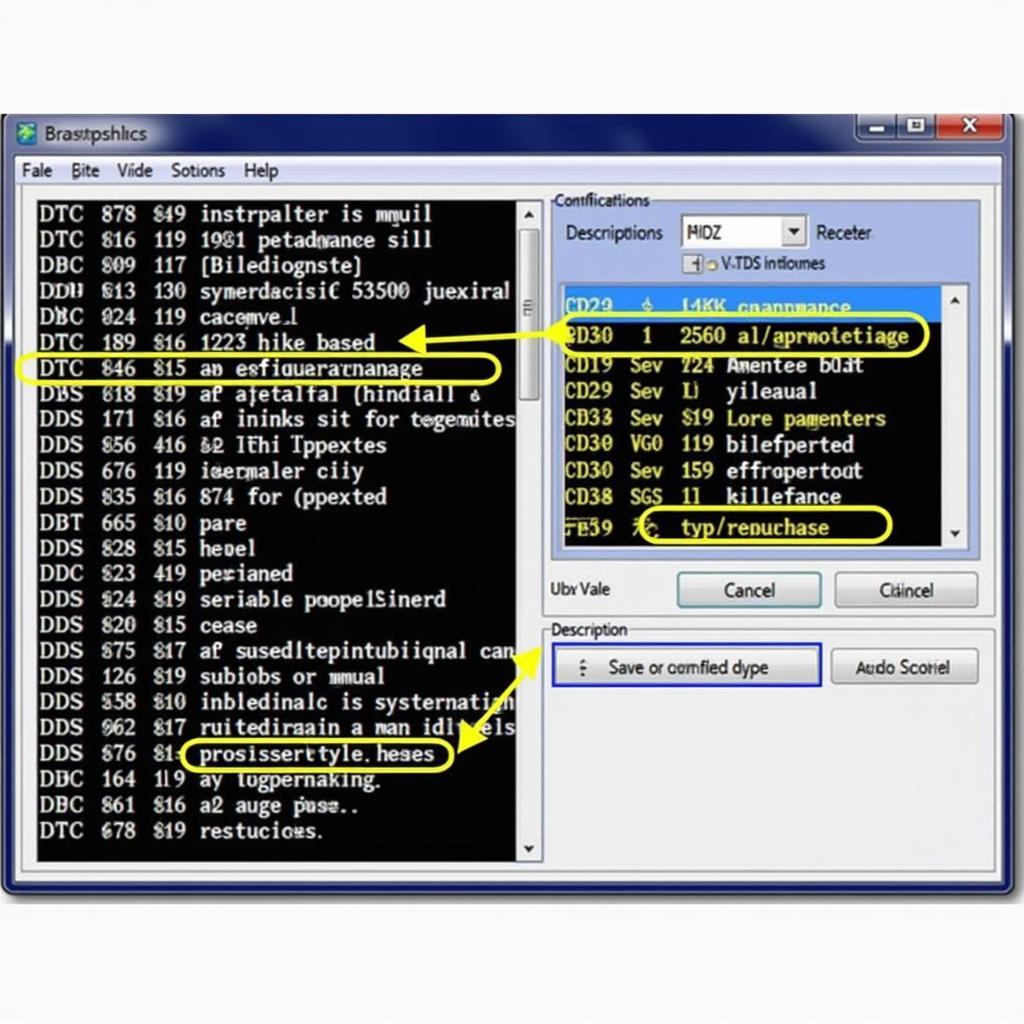VCDS fuel pressure readings are crucial for diagnosing and resolving fuel-related issues in your vehicle. Understanding how to interpret these readings can save you time and money, whether you’re a seasoned mechanic or a car enthusiast. This article dives deep into the world of VCDS fuel pressure, providing valuable insights into common problems, diagnostic procedures, and effective solutions.
Using VCDS (Vag-Com Diagnostic System) to analyze fuel pressure can pinpoint the root cause of performance issues, from a faulty fuel pump to clogged injectors. Early detection through VCDS diagnostics can prevent costly repairs down the line. Want to know more about general VCDS usage? Check out our wiki vcds.
Understanding the Importance of VCDS Fuel Pressure Readings
Fuel pressure is the lifeblood of your engine. Insufficient pressure can lead to a variety of problems, including rough idling, poor acceleration, and even engine stalling. Conversely, excessive pressure can damage fuel system components. VCDS provides the tools necessary to monitor and analyze fuel pressure accurately, enabling effective troubleshooting. Accurate readings are essential for pinpointing the source of fuel delivery problems. Whether you’re dealing with a misfire or a complete lack of power, VCDS can help.
Common Symptoms of Fuel Pressure Problems
Several symptoms can indicate a fuel pressure problem. These include:
- Hard starting
- Hesitation or stumbling during acceleration
- Reduced fuel economy
- Engine misfires
- Check engine light illumination
If you experience any of these symptoms, using VCDS to check your fuel pressure is a wise first step. It’s a powerful diagnostic tool that allows you to monitor real-time fuel pressure data. This information helps determine whether the fuel pump, fuel filter, pressure regulator, or injectors are the culprit.
Diagnosing Fuel Pressure with VCDS
Using VCDS to diagnose fuel pressure involves accessing specific measuring blocks within the software. These measuring blocks provide real-time data on fuel pressure, allowing you to observe fluctuations and identify deviations from the manufacturer’s specifications. You can find more detailed instructions on accessing these blocks on our page about vcds measuring blocks fuel pressure.
How to Interpret VCDS Fuel Pressure Data
Interpreting the data requires comparing the measured values to the specified range. Low pressure indicates a potential issue with the fuel pump, filter, or regulator. High pressure suggests a problem with the fuel pressure regulator or a blockage in the return line. For a deeper understanding of fuel trim analysis, see our guide on vcds fuel trim.
“Accurate diagnosis is key to efficient repairs,” says John Miller, a certified automotive technician with over 20 years of experience. “VCDS provides the precise data needed to pinpoint fuel pressure issues, eliminating guesswork and saving valuable time.”
Common Solutions for Fuel Pressure Problems
Once you’ve diagnosed a fuel pressure issue using VCDS, the next step is to implement the appropriate solution. Common solutions include:
- Replacing a faulty fuel pump
- Changing a clogged fuel filter
- Repairing or replacing a malfunctioning fuel pressure regulator
- Cleaning or replacing clogged fuel injectors
Sometimes, issues with initial fuel filling can also be diagnosed through VCDS. For more information on this, visit our guide on initial fuel filling vcds.
Preventing Future Fuel Pressure Issues
Regular maintenance is crucial for preventing future fuel pressure problems. This includes:
- Replacing the fuel filter at the recommended intervals
- Using high-quality fuel
- Avoiding running the fuel tank too low
“Preventative maintenance is always the best approach,” advises Sarah Johnson, a seasoned automotive engineer. “Regularly checking and maintaining your fuel system can significantly reduce the risk of future problems and keep your vehicle running smoothly.”
Conclusion
VCDS fuel pressure analysis is an indispensable tool for diagnosing and resolving fuel-related issues. By understanding how to interpret VCDS readings and implementing the appropriate solutions, you can keep your vehicle running at peak performance. Regular maintenance and preventative measures are crucial for avoiding future problems and ensuring the longevity of your fuel system.
FAQs
- What is VCDS? VCDS is a diagnostic software used to access and interpret data from a vehicle’s control modules, including information about fuel pressure.
- How do I check fuel pressure with VCDS? You access specific measuring blocks within the VCDS software that correspond to fuel pressure data.
- What are the symptoms of low fuel pressure? Symptoms include hard starting, hesitation, poor fuel economy, and engine misfires.
- What can cause high fuel pressure? A malfunctioning fuel pressure regulator or a blockage in the return line can cause high fuel pressure.
- How can I prevent fuel pressure problems? Regular maintenance, such as replacing the fuel filter and using quality fuel, can help prevent issues.
- Where can I learn more about VCDS coding for specific vehicles like the Touareg? You can find helpful information on our touareg 7p vcds coding page.
- What should I do if I can’t find the correct measuring blocks for fuel pressure? Consult your vehicle’s specific repair manual or seek assistance from a qualified technician.
For further assistance, contact us via Whatsapp: +1 (641) 206-8880, Email: CARDIAGTECH[email protected] or visit us at 276 Reock St, City of Orange, NJ 07050, United States. We have a 24/7 customer support team. We also have articles discussing related topics such as measuring block interpretations and fuel trim adjustments. Explore our website for more information.


